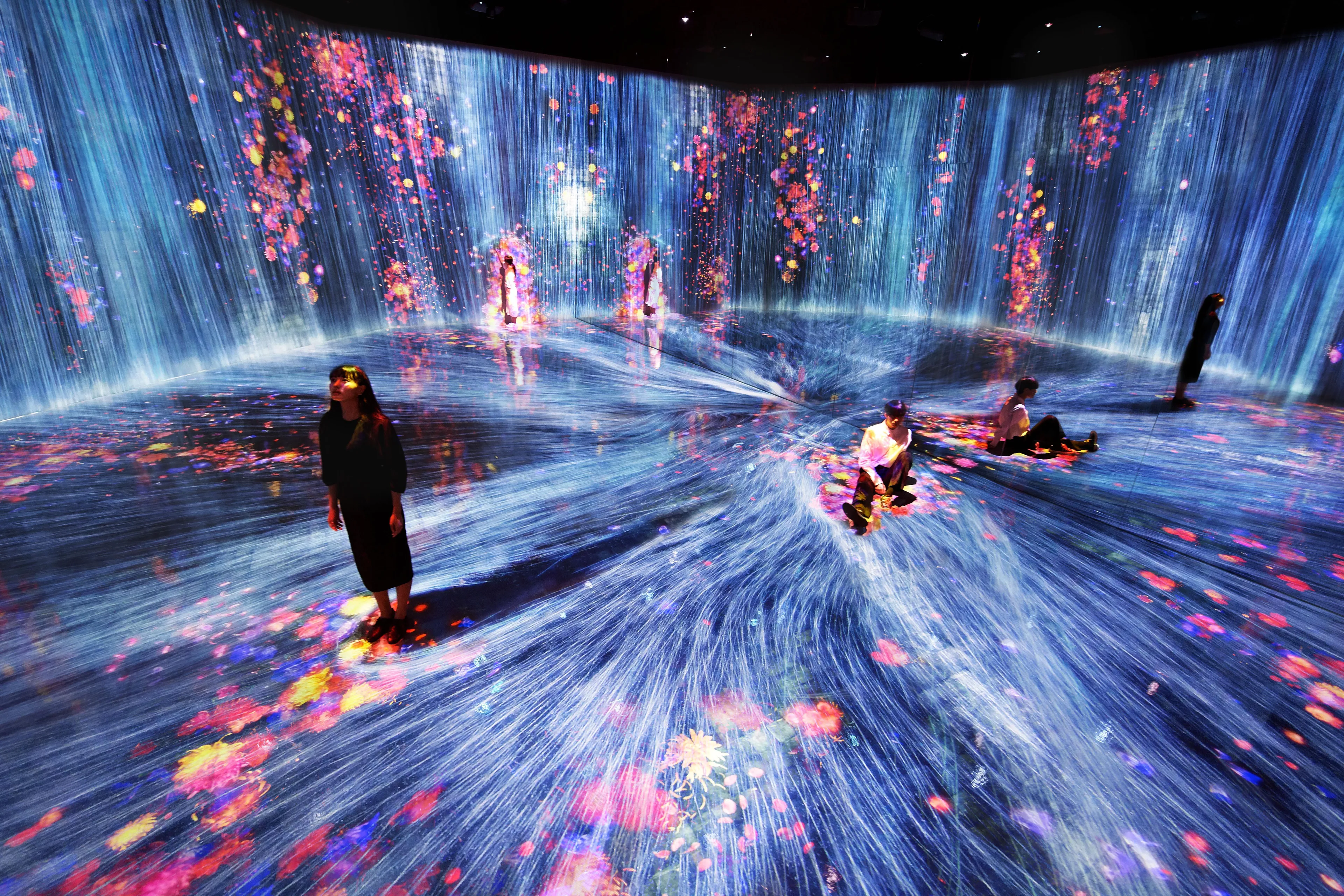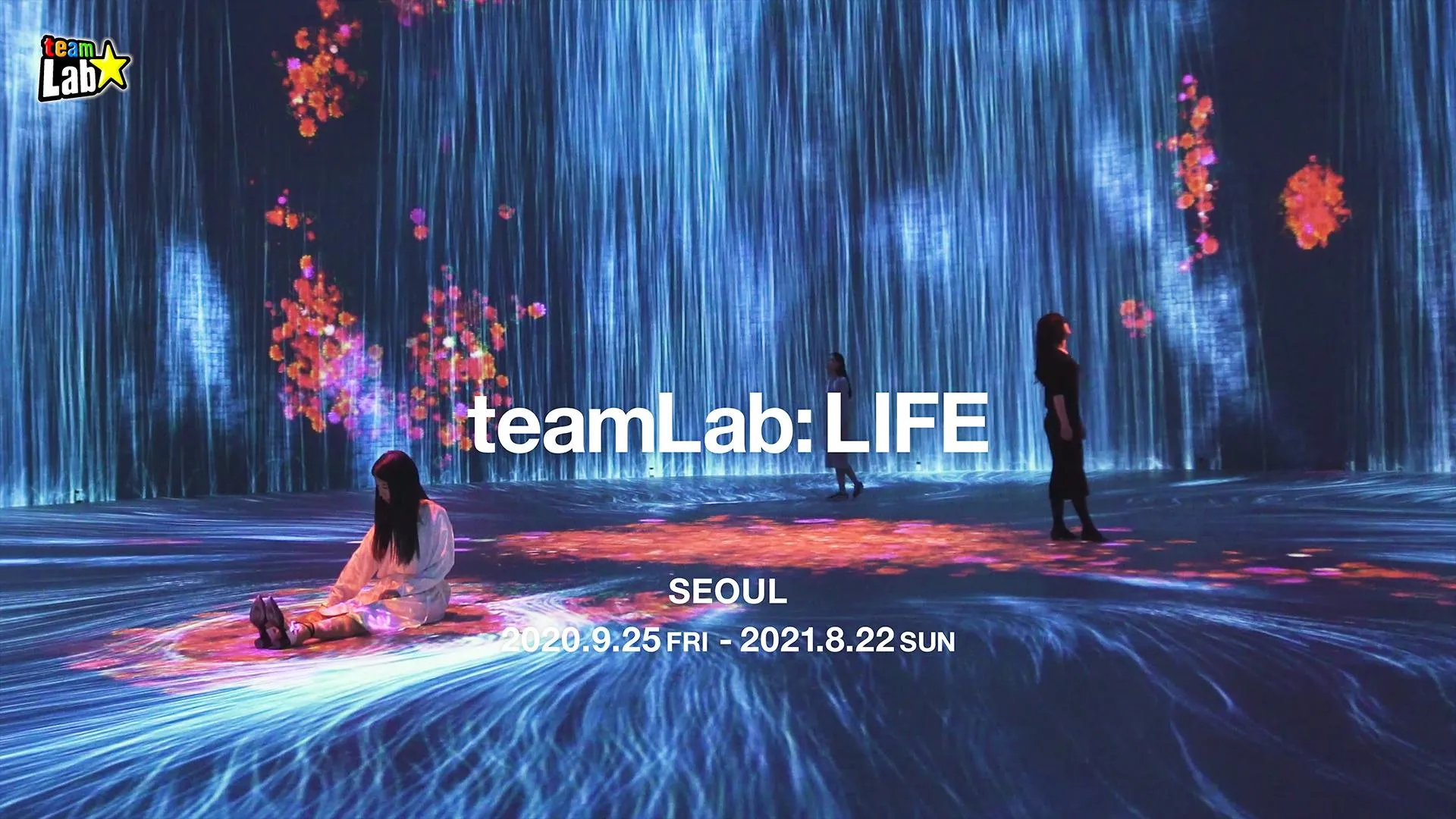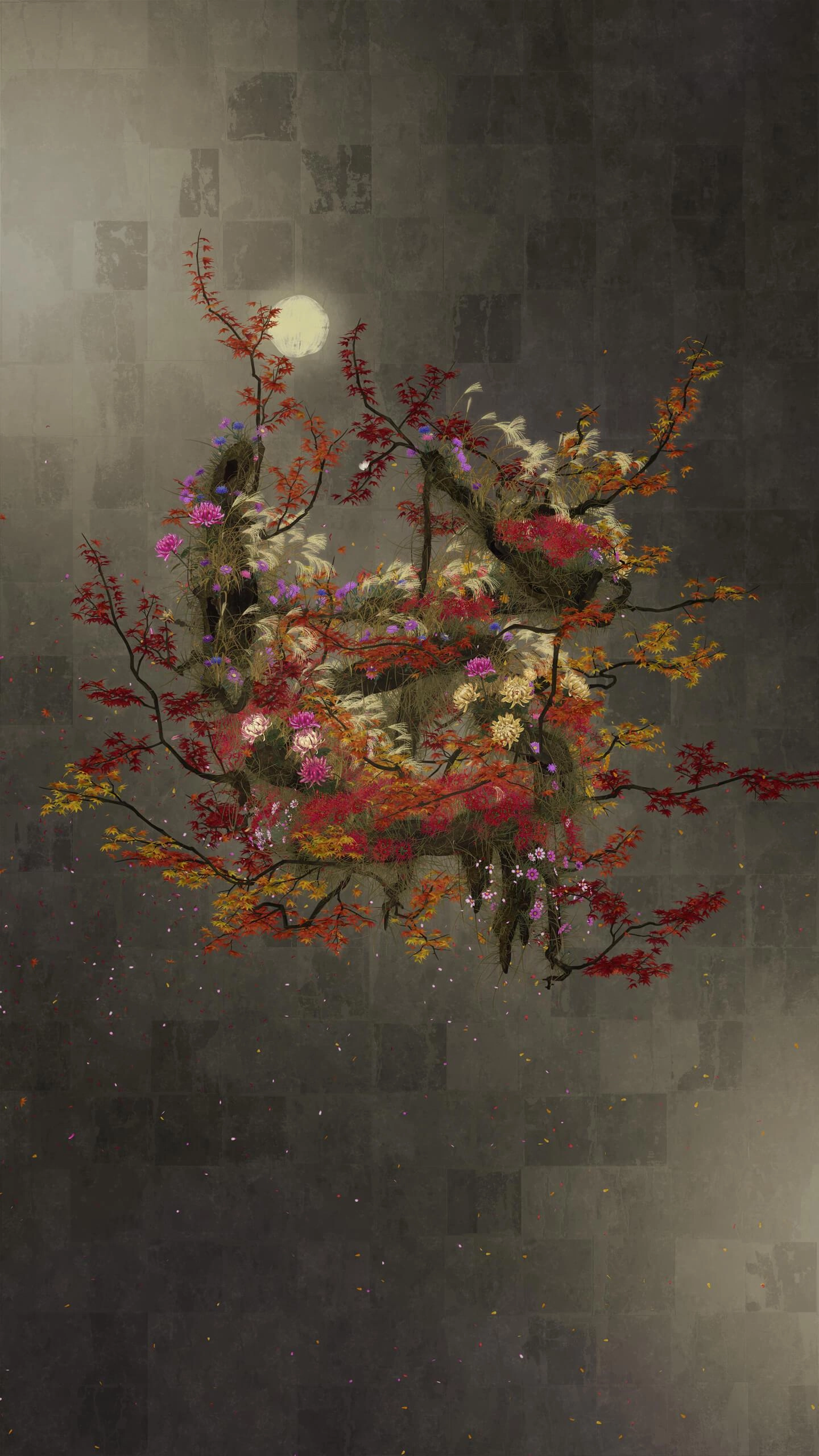teamLab: LIFE | teamLab

EXPOSITION PASSÉE
2020.9.25(Fri) - 2021.8.22(Sun)Dongdaemun Design Plaza (DDP) , Seoul

EXPOSITION PASSÉE
2020.9.25(Fri) - 2021.8.22(Sun)Dongdaemun Design Plaza (DDP) , Seoul
Measures to prevent the spread of COVID-19
teamLab: LIFE
The blessings and threats of nature, as well as the blessings and threats of civilization, are continuous. There is no single source of absolute malice, nor can it all be dismissed idealistically. There are no simple answers, and at times it is difficult to process our emotions. Even so, we want to affirm life in all aspects. Life is beautiful.

Travaux
Sur teamLab
teamLab (f. 2001) is an international art collective. Their collaborative practice seeks to navigate the confluence of art, science, technology, and the natural world. Through art, the interdisciplinary group of specialists, including artists, programmers, engineers, CG animators, mathematicians, and architects, aims to explore the relationship between the self and the world, and new forms of perception.
In order to understand the world around them, people separate it into independent entities with perceived boundaries between them. teamLab seeks to transcend these boundaries in our perceptions of the world, of the relationship between the self and the world, and of the continuity of time. Everything exists in a long, fragile yet miraculous, borderless continuity.
teamLab’s works are in the permanent collection of the National Gallery of Victoria, Melbourne; Art Gallery of New South Wales, Sydney; Art Gallery of South Australia, Adelaide; National Gallery of Australia, Canberra; Amos Rex, Helsinki; Museum of Contemporary Art, Los Angeles; Asian Art Museum, San Francisco; Borusan Contemporary Art Collection, Istanbul; and Asia Society Museum, New York, among others.
teamlab.art
Biographical Documents
teamLab is represented by Pace Gallery, Martin Browne Contemporary and Ikkan Art.
Informations sur le Lieu
teamLab: LIFE
Durée
2020.9.25(Fri) - 2021.8.22(Sun)
Horaires
10:00 - 20:00
Last Entry 19:00
Last Entry 19:00
Fermé
Oct 5, Oct 19, Nov 2, Nov 16, Nov 30, Dec 14, 2020
Feb 15, Mar 8, Apr 19, Jun 14, Jul 19, 2021
* Operates on national holidays
Feb 15, Mar 8, Apr 19, Jun 14, Jul 19, 2021
* Operates on national holidays
Accès
Accès
DDP Dongdaemun Design Plaza Museum B2F Design Exhibition Hall (M1 Gate)
281, Eulji-ro, Jung-gu, Seoul 04566
281, Eulji-ro, Jung-gu, Seoul 04566
Adresse dans la langue locale:
DDP 동대문 디자인 플라자 배움터 지하 2층 디자인 전시관(M1 Gate)
04566 서울시 중구 을지로 281
04566 서울시 중구 을지로 281
By Subway
Exit 1 of Dongdaemun History and Culture Park Station (Lines 2, 4, and 5)
- Closest to the B2 level entrance to Oullim Square, the Design Market, the Design Lab, and the Museum
Exit 2 of Dongdaemun History and Culture Park Station (Lines 2, 4, and 5)
- Closest to the first floor entrance of the Design Lab and the Dongdaemun History and Culture Park entrance (near Gallery Moon and underground parking lot)
By Bus
(02-174) Dongdaemun History and Culture Park
-N13, 105, 152, 301, 7212, 9403
(02-173) Dongdaemun History and Culture Park
-N13, N16, N30, 105, 144, 261, 301, 407, 420, 2014, 2233, 7212
(02-175) Dongdaemun History and Culture Park
-N13, N16, N30, 105, 144, 261, 301, 407, 420, 2012, 2015, 2233, 90S Tour
(02-235) Dongdaemun History and Culture Park
-N62, 202, 507, 2014, 2233
(02-280) Dongdaemun Design Plaza
-2012
(02-171) Gwanghui-dong
-N13, N16, 144, 301, 420, 7212
(02-170) Gwanghui-dong
-N13, N16, 100, 105, 144, 301, 420, 407, 7212
(02-169) National Medical Center on Euljiro-6ga
-N30, 100, 105, 202, 152, 261
By Car
From Heunginjimun and Cheonggye 6-ga areas via Jangchungdan-ro
- Turn left toward Sindang Station and Chungmu Art Hall at Dongdaemun History and Culture Park Junction
- Follow Eulji-ro 45-gil approximately 200 m
- Enter DDP basement parking lot
From Majang Station and Heunginjimun areas via Majang-ro
- Make a left turn at the fashion mall U:us
- Take Eulji-ro 45-gil
- Enter DDP basement parking lot after approximately 300 m
From the Hannam-daegyo and Jangchung Gymnasium areas via Jangchungdan-ro
- Pass Gwanghui-dong Junction and make a left turn toward Sindang Station and Chungmu Art Hall at Dongdaemun History and Culture Park Junction
- Follow Eulji-ro 45-gil approximately 200 m
- Enter DDP basement parking lot
Organisateurs
CultureDepot
Supportaires
STUDIO DRAGON, IEUM HASHTAG, GRAYGO, STONEHENgE























